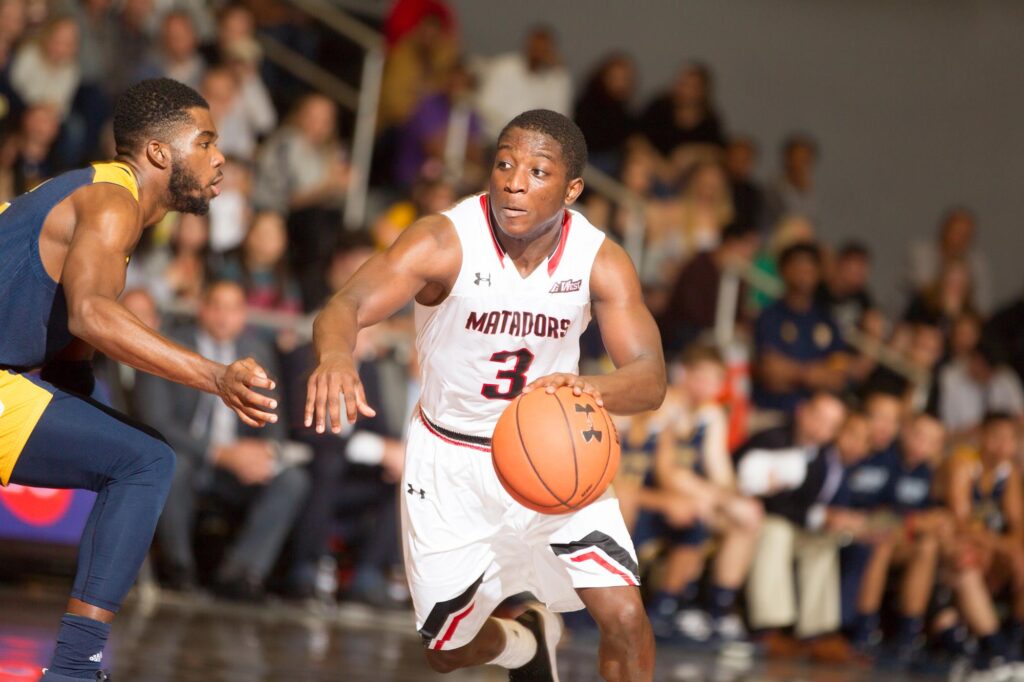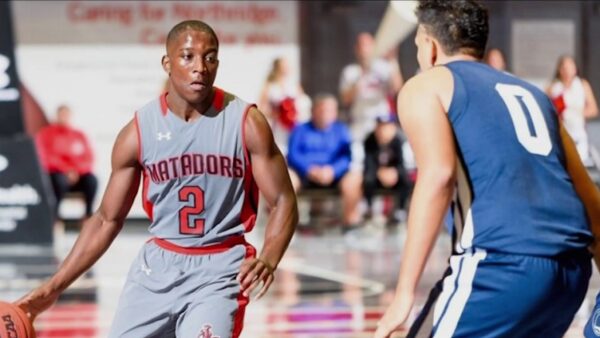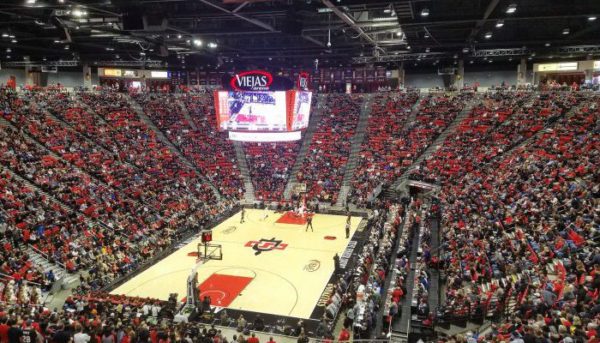What does Terell Gomez bring to SDSU?

CSUN

Terell Gomez recently transferred from CSUN and committed to SDSU. He is a 5-foot-8 scoring guard who averaged 19.8 points, 2.5 rebounds, and 2.3 assists a game while shooting 43.9% from the field, 44% from deep, and 94.8% from the charity stripe.
There is a lot of excitement about what adding such a prolific and efficient scorer can do for the team. There are also concerns about how well a 5-foot-8 point guard can defend.
This piece will look at what type of skills and abilities Gomez brings to the team.
Shooting
The most prolific skill Gomez brings is his shooting. Gomez has taken 672 3-point shots in his career and has connected on 43.6% of those shots. The sample size is not an issue, and those shots come in many variations as well. Gomez is not limited to step in threes that teammates create for him. At CSUN, he was constantly running off of screens, taking shots off the dribble, and hitting 3’s in transition. That type of versatility allows for a lot of offensive creativity.
Shot creation
There are two levels of shot creation. Can you create your shot, and can you create chances for others?
Gomez is surprisingly good at creating for himself. Despite his 5-foot-8 stature, Gomez was better than 94% of college basketball players at shooting off the dribble. In isolation situations, Gomez scored at a rate of 95 points per 100 possessions (PP100), which was better than 81% of college basketball players.
In the pick and roll, Gomez scored at a rate of 101.5 PP100, which is incredibly efficient for that play type and better than 94% of college basketball players. Most of the shots Gomez takes in those situations are jump shots behind the arc or around the elbow. SDSU will have to wait and see if that level of efficiency is sustainable while getting so few looks at the basket, but Gomez has been incredibly efficient for three seasons running.
Creating for others is a different story. Gomez’s passes weren’t nearly as efficient as his shots, leading to a scheme being designed to get him shot and pass less. As an example, when Gomez passed to a teammate out of the pick and roll, the Matadors scored 78.7 PP100. That’s 22.8 PP100 less than if Gomez kept the ball and shot it himself.
The data does not provide all the context in this situation, as Gomez could make the right pass and have a teammate miss a wide-open look. Being surrounded by better teammates at SDSU will likely help his passing efficiency numbers. Gomez is capable of making most, if not all, the passes. Driving to the rim and kicking out to a corner shooter may be tough, but Gomez tends to shoot a pull up before getting to the rim anyway. He does have experience being the primary ball-handler as he performed that role as a freshman. He did not have that responsibility last season however, serving more like an off-ball shooter.
Finishing
This is different from shooting. This looks at Gomez’s ability to finish at the rim. He has a pretty good first step and can often get even with his defender, forcing the big man to rotate. He won’t blow by his defender often, but he’s quick enough to get to an advantageous position.
Once at the rim, Gomez has an array of fancy finishes in his bag that he can pull out. One of his favorites is the reverse layup off the baseline drive. It lets him use the rim to protect the ball from any defenders trying to sway the shot.
The bad news is, more often than not, he’s forced to use those fancy finishes just to get his shot off. If he’s attacking a 6-foot-10 big man, he’s giving up more than a foot in height. It would be like a normal-sized player guarding a 5th grader. A highly skilled 5th grader to be sure, but the point still stands. In some, he’s made some dazzling finishes at the rim, but he also had floaters and alley-oop attempts blocked by the defending big man.
Looking at the data, Gomez is a player who is more efficient in the mid-range than he is at the rim. Last season he finished in the 8th percentile in finishing at the rim. He was actually 11 PP100 more efficient from the midrange area, which is unheard of in modern basketball thinking. Most defenses are designed to force midrange shots, but teams that try to do that to Gomez will get burned more often than not.
On-Ball Defense
One of Gomez’s positive traits is his quick feet. Being lower to the ground makes it easier to pick up your feet, change directions, and stay in front of players. Gomez has shown the ability to do that. His isolation defense data is reliable, despite only having a small sample. If Gomez were a terrible defender, one would expect teams to try and pick on him more, so having a small sample size can be a good indication in this regard.
Gomez does not quite have the same top-level speed as other players, so if they can gather momentum, they can get by him. If both players are starting at a stand-still, Gomez has a shot at staying in front.

On the other hand, Gomez tends to die on screens. If he gets screened, he does not put a lot of effort into going over or under it. He just seems to accept that he has been screened and lazily tries to get back to his man.
If he can fix the issues with fighting through screens, Gomez can become a more effective defender.
Off-Ball Defense
Gomez’ off-ball defense was worse than his on-ball defense last season. Gomez tends to ball watch, letting his man get back door cuts and wide-open jumpers. Gomez ranked in the 14th percentile against catch and shoot opportunities last season, while 53% of those shots went unguarded, meaning Gomez was more than six feet away from his man at the time of the shot. Despite his small stature, opponents were less efficient in their catch and shoot opportunities when Gomez was within 6 feet of them at the time of the shot. They were about 8 PP100 less efficient.
When Gomez would close out hard enough to force a spot-up shooter to attack the basket, he had some modest success, as they would drive but often not be able to get by him, and they’d miss a mid-range shot. However, more often than not, they were wide open behind the arc and would burn him.
It is important to note that Gomez was often the offensive focal point of his team, and he averaged 37.1 minutes per game. It can be hard for a player to focus on defense under those circumstances. That likely would not be the case at SDSU. For example, Malachi Flynn only averaged 33.4 minutes per game. Gomez will probably play 28-30 minutes a game. In addition, having players like Matt Mitchell, Jordan Schakel would seriously lighten his offense load. That would allow him to focus more on the defensive side of the ball and improve in a few key areas to make his defense passable.
Gomez will never be a lock-down defender, but he is capable of fighting through screens and having a greater focus on the defensive side of the ball and has already mentioned he wants to improve his defense. KJ Feagin was not known as a good defender at Santa Clara, so there is hope that Gomez can become passable on the defensive side of the ball.
Native San Diegan living in Montana. Big time Aztec Basketball fan. Creator of Aztec Breakdown. Hoping to help people enjoy basketball more by increasing their understanding of it.